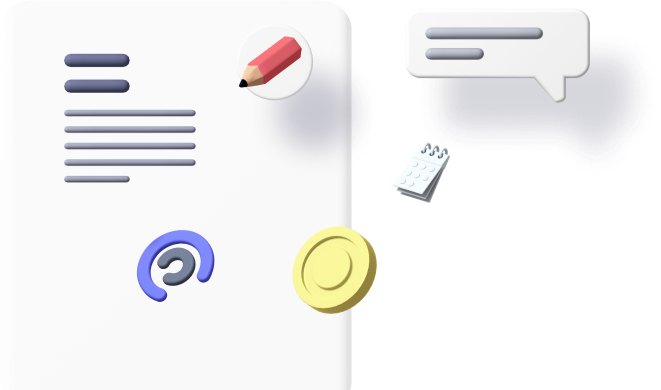
In the modern workplace, maximizing productivity is paramount for success. One of the most effective strategies to achieve this is through staff automation. By automating repetitive tasks and streamlining workflows, businesses can empower their employees to focus on more strategic initiatives. This article explores how staff automation boosts productivity and enhances overall organizational efficiency.
Understanding Staff Automation
Staff automation involves using technology to perform tasks that would typically require human intervention. This can include automating emails, data entry, scheduling, and various administrative functions. The goal is to reduce the time spent on mundane tasks, allowing employees to concentrate on higher-value work that drives business growth.
1. Reducing Time Spent on Repetitive Tasks
One of the most immediate benefits of staff automation is the significant reduction in time spent on repetitive tasks. Many employees find themselves bogged down by routine activities such as data entry, reporting, and scheduling. By automating these processes, businesses can free up valuable time for employees to engage in more meaningful work.
Example:
For instance, automating data entry with tools like WorkForce Sync can save hours of manual work each week, enabling staff to focus on analysis and decision-making rather than clerical tasks.
2. Enhancing Accuracy and Reducing Errors
Automation not only saves time but also enhances accuracy. Human errors are common in manual processes, especially when tasks are repetitive. Staff automation minimizes the risk of mistakes by ensuring that tasks are performed consistently and correctly.
Example:
Consider an HR department that automates payroll processing. By using automated systems, companies can reduce errors in calculations and ensure timely payments, thus improving employee satisfaction and trust.
3. Streamlining Communication
Effective communication is essential for productivity. Staff automation tools can streamline communication by automating notifications, reminders, and updates. This ensures that everyone is on the same page and reduces the chances of miscommunication.
Example:
Automation platforms like Slack or Microsoft Teams can send automated reminders for upcoming meetings or deadlines, keeping teams informed without the need for constant manual follow-ups.
4. Empowering Employees with Better Tools
Staff automation provides employees with better tools to manage their workloads. By implementing automation solutions, businesses can equip their teams with technology that enhances efficiency and simplifies processes.
Example:
Tools like Asana or Trello allow teams to automate task assignments and status updates, making project management more efficient. Employees can prioritize their work effectively and focus on tasks that matter most.
5. Improving Collaboration
Automation fosters better collaboration among team members. By streamlining workflows and facilitating communication, staff automation helps teams work together more effectively. Automated systems can provide a centralized platform for sharing information and coordinating efforts.
Example:
Using a collaborative automation tool, teams can assign tasks, track progress, and share documents seamlessly. This reduces the need for lengthy email threads and enhances overall teamwork.
6. Scaling Operations Efficiently
As businesses grow, scaling operations can become challenging. Staff automation allows organizations to scale their processes without the need for proportional increases in staff. Automated systems can handle larger volumes of work without compromising quality.
Example:
A retail business that automates inventory management can efficiently handle increased demand during peak seasons without needing to hire additional staff, thus maintaining productivity.
7. Facilitating Data-Driven Decision Making
Automation tools often come equipped with analytics capabilities, providing valuable insights into business operations. By automating data collection and analysis, businesses can make more informed decisions based on real-time information.
Example:
Sales automation tools can analyze customer interactions and sales data, helping teams identify trends and opportunities for improvement. This empowers decision-makers to act swiftly and strategically.
8. Enhancing Employee Satisfaction
When employees are relieved of mundane tasks, job satisfaction tends to increase. Automation allows them to engage in more meaningful work, fostering a sense of purpose and accomplishment. This can lead to higher retention rates and a more motivated workforce.
Example:
Employees who can focus on creative projects or client interactions rather than repetitive tasks are likely to feel more fulfilled in their roles, leading to a positive workplace culture.
9. Implementing Continuous Improvement
Staff automation encourages a culture of continuous improvement. By analyzing automated processes, businesses can identify areas for enhancement and optimization. This iterative approach ensures that operations remain efficient over time.
Example:
Regularly reviewing automated workflows can help organizations pinpoint bottlenecks or inefficiencies, allowing them to refine processes and boost productivity further.
10. Cost Savings and Increased Profitability
Ultimately, staff automation can lead to significant cost savings. By reducing the time spent on repetitive tasks and minimizing errors, businesses can lower operational costs and increase profitability. The resources saved can be redirected toward growth initiatives.
Example:
A company that automates its invoicing process can reduce administrative costs while accelerating cash flow, leading to improved financial health.
Conclusion
Incorporating staff automation into business operations is a powerful strategy for boosting productivity. By reducing time spent on repetitive tasks, enhancing accuracy, and streamlining communication, organizations can empower their employees to focus on high-value work. The benefits of automation extend beyond individual tasks, fostering collaboration, improving employee satisfaction, and driving profitability. As businesses continue to evolve, embracing staff automation will be key to achieving long-term success.















